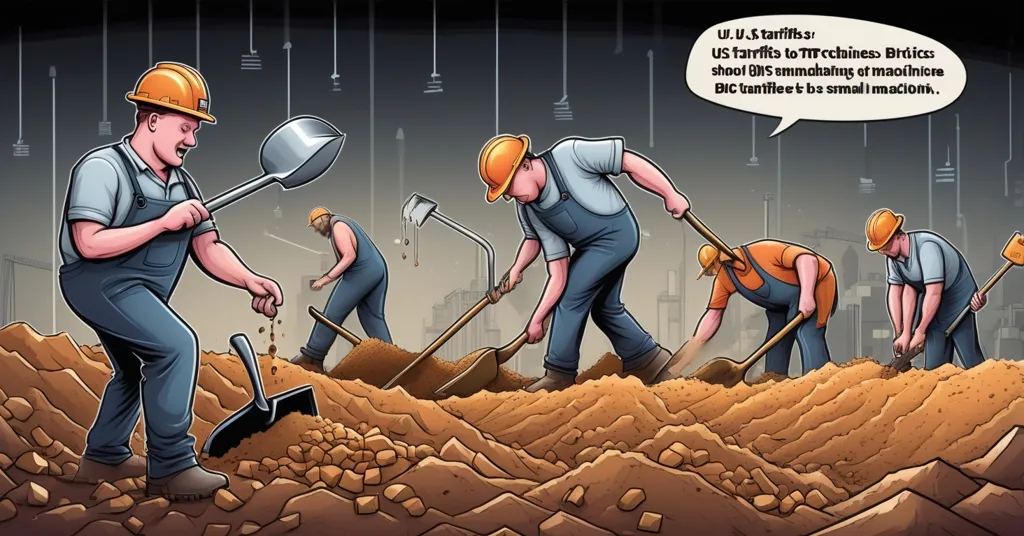BTC Hashrate Soars to 1 ZH/s, U.S. Miners Struggle with Tariffs and Rising Costs

BTC Mining Hashrate Hits ATH, Intensifying Pressure on U.S. Miners Squeezed by Tariffs
On April 5, 2023, Bitcoin’s mining hashrate, which is the total computational power used to mine and process transactions on the Bitcoin network, soared to an all-time high of over 1 Zetahash per second (ZH/s). This milestone not only showcases the network’s growing strength but also underscores the challenges faced by U.S. miners, particularly due to tariffs on Chinese imports.
- Bitcoin hashrate reaches 1 ZH/s, a 1000X increase since January 2016
- U.S. miners struggle with reduced profitability and higher equipment costs
- Network difficulty adjustments and fixed rewards heighten competition
Platforms like Mempool.space and BTC Frame recorded peak hashrates at 1.025 ZH/s and 1.02 ZH/s, respectively, reflecting the global push to secure Bitcoin’s network. Hashrate is crucial for Bitcoin as it measures the network’s security and efficiency. The higher the hashrate, the more secure the network becomes against potential attacks, but it also means miners must work harder to earn the same rewards.
Bitcoin’s network adjusts its difficulty every two weeks to keep block times steady at around 10 minutes. As the hashrate grows, so does the difficulty, which impacts the hashprice—the revenue miners earn per unit of computing power. From a peak of around $60 in mid-January, hashprice has plummeted to about $40, significantly affecting miners’ profitability.
U.S. miners face additional challenges due to a 34% retaliatory tariff on Chinese exports imposed by the Trump administration. With China being the top supplier of Bitcoin mining hardware, these tariffs have driven up equipment costs, further straining miners’ return on investment (ROI). John Doe, a miner from Texas, shared his struggle with rising costs due to tariffs: “It’s like trying to mine gold with a spoon while everyone else has a shovel.”
Mitchell Askew, head analyst at Blockware Solutions, notes the industry’s response to these pressures:
“Miners are doubling down: expanding sites and plugging in more efficient machines.”
The race for efficiency is not just a survival tactic; it’s a technological arms race. Miners are forced to upgrade their gear faster than you can say ‘blockchain’ or risk being left behind. This relentless drive for efficiency could lead to more decentralized and resilient Bitcoin networks, as miners worldwide seek to optimize their operations.
Yet, there’s a dark side to this narrative. Some argue that the focus on efficiency is pushing smaller miners out, potentially centralizing the network further. As Mitchell Askew points out, the industry’s response is crucial, but it’s a fine line between survival and centralization.
Bitcoin’s hashrate growth is a testament to its increasing security, but it also highlights the brutal reality of the mining industry. With a fixed daily reward of 450 BTC until the next halving in 2028, the pressure to innovate and adapt has never been more intense. This situation raises critical questions about the future of Bitcoin mining, particularly in the U.S.
As miners navigate these turbulent waters, they’re not just fighting for their own survival but contributing to Bitcoin’s broader evolution. The potential rewards of a more secure, decentralized, and efficient network are what keep us all tuned in.
Here are some key takeaways and questions to consider:
-
What does an increase in Bitcoin’s hashrate signify for the network?
An increase in Bitcoin’s hashrate signifies a more robust and secure network, as it becomes more resistant to attacks. However, it also means increased competition among miners, which can lead to reduced profitability.
-
How does the mining difficulty adjustment affect miners?
As the hashrate increases, the network adjusts its difficulty to maintain a steady block time, which results in miners having to compete for a fixed amount of mining rewards. This adjustment can lead to a decline in hashprice and profitability for individual miners.
-
What are the specific challenges faced by U.S. miners due to tariffs?
U.S. miners face increased equipment costs due to the 34% retaliatory tariff on Chinese exports, which impacts their return on investment and overall profitability.
-
What are miners doing in response to the increased hashrate and reduced profitability?
Miners are focusing on expanding their operations and using more efficient machines to maximize their operational efficiency and stay competitive in the market.
-
What might happen to miners with less efficient equipment?
Miners with less efficient equipment may be forced out of the market if Bitcoin’s price does not increase, as they will struggle to remain profitable in the face of rising competition and costs.
As we watch this drama unfold, it’s clear that the journey of Bitcoin mining is far from over. It’s a testament to the relentless spirit of innovation and the unyielding drive for efficiency that defines the crypto space. And while the road ahead may be fraught with challenges, the potential rewards—of a more secure, decentralized, and efficient network—are what keep us all tuned in.



